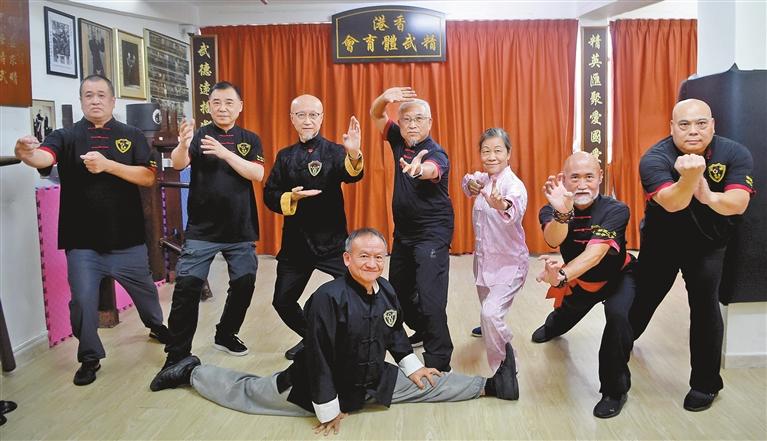
IN Hong Kong, the kung fu world, made up of numerous martial arts sects, can be wrapped up in a single room. More than 20 martial arts masters of various kung fu styles have gathered together in a studio in downtown Kowloon and aligned with one and another under the name of “Chin Woo.” After spending nearly five decades in the Hong Kong Chin Woo Athletic Association, Ke Junlong, the 69-year-old chairman, reckons Chin Woo as “a big family,” drawing like-minded martial arts enthusiast together from various sects, and even across the boundaries of space and time. Wing Chun, taught by Lam Chin-ting, is characterized by its philosophy of using an opponent’s force against them. On the contrary, Eight Diagrams Palm emphasizes taking pre-emptive action before the opponent. It is taught by Lee Hau-cyun, who was also the vice chairman of the association. Hung Kuen, which contains a series of powerful movements, is taught by Cheung Pun-leung, a small and wiry retired lifeguard who is one of the successors of Wong Fei-hung. Wong Yiu-kau, tall and sturdy, teaches Lung Ying (Dragon Shape), a kind of agile and swift martial art of which the movements and the name were both derived from the Chinese dragon. It is the core principle of Chin Woo to eliminate the boundaries among various sects and thus facilitate communication. The masters are from different walks of life, but have invariably devoted their time and passion to the part-time teaching jobs here, as they share the same ardor for Chinese martial arts. To that end, lower tuition fees are charged at Chin Woo than at other places, attracting hundreds of students every week, including long-time kung fu fans who want to realize their dreams after retirement, children who view martial arts as an interesting physical exercise, and foreigners fond of Chinese culture. The word “Chin Woo,” literally translated as “advocates and excels at martial arts,” has always been a magnet for martial arts lovers ever since its emergence more than a century ago. Founded by a group of martial artists, among whom was the renowned Huo Yuanjia, in 1910 in Shanghai, the Chin Woo Athletic Association aimed to unite various martial arts sects to train people to be strong both physically and mentally. The traditional Chin Woo outfit and boots, designed by Huo and others to suit the needs while practicing, are still the uniforms for Hong Kong Chin Woo members. Also, the 10 Chin Woo routine movements, drawn upon from a variety of martial arts sects to provide basic skill trainings for beginners, can still be learned in its rather original version from Lee. Yet, for Ke, the most valuable heritage handed down by Chin Woo ancestors should be the spirit of patriotism and righteousness. From past to present, Hong Kong Chin Woo members have always participated voluntarily in all sorts of charity performances to raise funds for people in need, and provided free education for children in the 1950s. Throughout its 101 years, Chin Woo has always been part of the patriotic community in Hong Kong, which can be exemplified by Ke’s pick of 1997 as his most unforgettable year in Chin Woo. “It was a bustling yet marvelous year,” Ke recalls, adding that Chin Woo members, together with fellow martial artists in Hong Kong, held a number of performances throughout the whole year to celebrate the return of Hong Kong to the motherland. In Hong Kong, a highly internationalized city, tradition has it that the gate of Chin Woo has always been open to visitors from home and abroad. Attracted by the association’s worldwide reputation, batches of overseas kung fu fans come to learn martial arts here every year. Some of them brought the spirit of “Chin Woo” back to set up local branches. Under the important contributions of Hong Kong Chin Woo, there are currently more than 80 Chin Woo branches worldwide. Lee said that when asked by some foreigners to explain the spirit of Chin Woo, he gave a terse answer: to help the people in need. Also, some types of foreign martial arts have been absorbed into Hong Kong Chin Woo. For example, Ke himself is a master of karate. In 2017, to deepen communications among practitioners, Ke and other Chin Woo members initiated a grading system, applying relatively universal standards to appraise one’s martial arts performances, regardless of the sect. Next, Ke wishes to assemble local martial artists and organize an international martial arts competition in Hong Kong, presenting the name “Chin Woo” and the charm of Chinese martial arts to more people all over the globe. (Xinhua) | 
